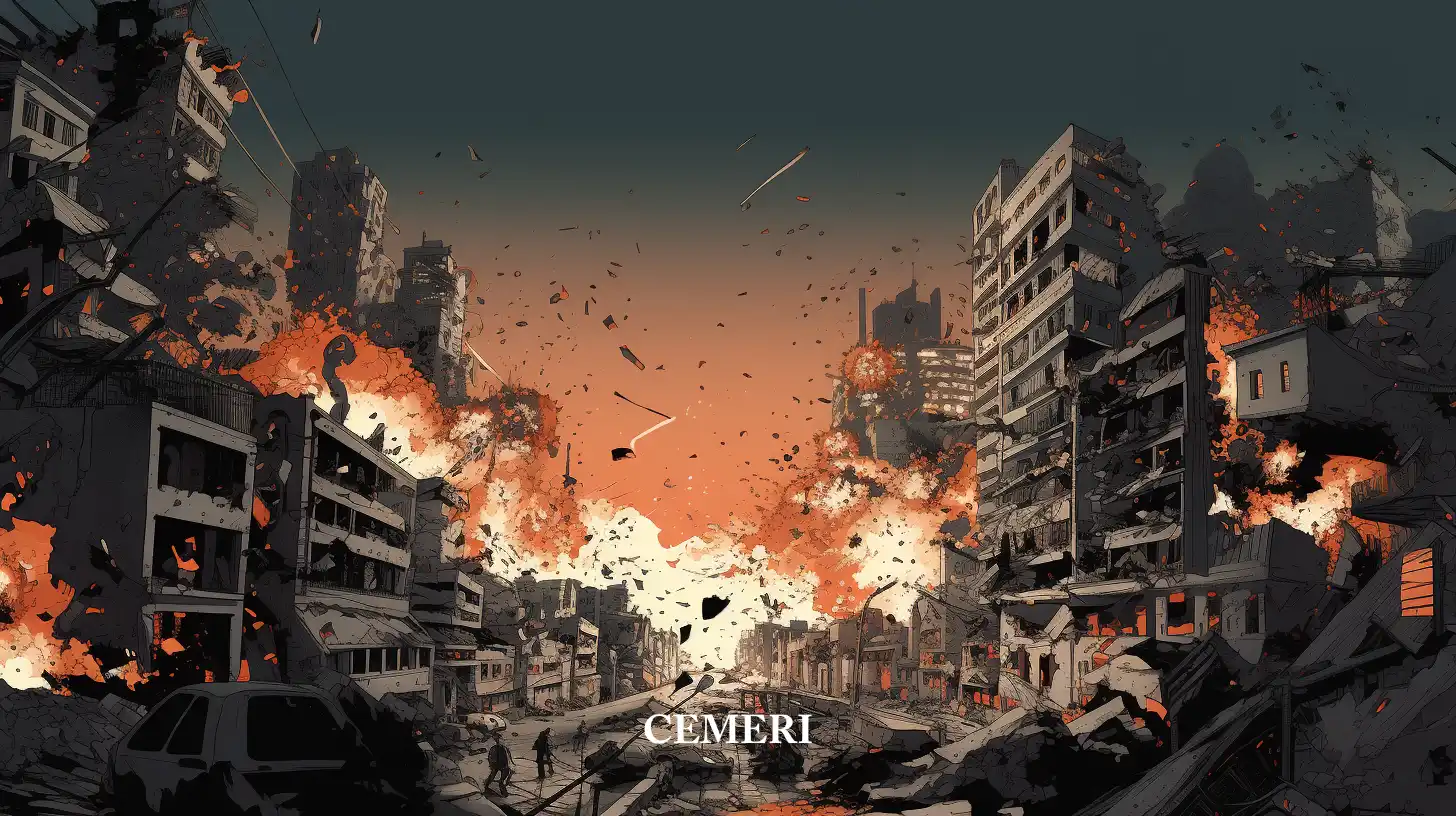Encyclopedia
Galia Morales Hernández
What is poverty?
- Poverty and its evolution are related to a series of factors, such as economic growth, economic policy, social mobility, etc.

The appearance of the phenomenon of poverty is quite old, however its study, analysis and conceptualization dates back to the beginning of the 19th century, when the phenomenon of poverty began to be more noticeable in society, it is even pointed out that it was accentuated, since in the populations of the countries that were further into the Industrial Revolution it caused an increase in poverty and also saw a more marked inequality worldwide.
For this same reason, the first studies and contributions on poverty in the West began in Europe. The contributions of Thomas Malthus, David Ricardo, Rowntree and Marx were highlighted. On the one hand, the first two authors stated that poverty was the consequence of an arithmetic growth of food and a geometric growth of the population. While Rowntree (1901) carried out a study to measure poverty in York, he used the nutritional requirements that each person needed to develop fully as a standard to quantify it (Rowntree, 1937). The main contributions of this author regarding the study of poverty refer to the division that he made between primary and secondary poverty, as well as the establishment of a poverty line.
For his part, Marx's ideas were positioned more towards the dismissed idea of capitalism, and pointed out that the possession of the means of production and subsistence were the causes of the phenomenon, for this reason he pointed out that there was a class (elite) that was guilty of it.
In this way, from that historical moment, the first conceptualizations of poverty were established and various methodologies for its measurement were developed, at the same time international institutions and organizations were created to combat it, as well as different actions for its attention.
Definition of poverty
Poverty and its evolution are related to a series of factors, such as economic growth, economic policy, changes in the labor market, social mobility, value integration of an individual type, integration of people into society, spaces for collective action and change in occupational opportunities. According to the National Council for the Evaluation of Social Development Policy (CONEVAL), the study of poverty is closely related to the notion of development, since they represent opposing aspects of what is seen as a dignified and full life (CONEVAL, 2016).
According to the United Nations (UN), poverty includes, among these conditions, limited access to food, drinking water, sanitary facilities, health, housing, education, as well as information (United Nations, 2022). Due to the figures that are presented worldwide, this issue has been a priority of the same organization for several decades, which is why it is the first Sustainable Development Goal that marks the UN agenda, the latter will be detailed later.
In the study of this phenomenon, a difference is made between poverty and extreme poverty, defining the latter as that situation in which a person cannot access the basic food basket that allows them to consume a basic amount of calories per day, and poverty as that situation in which a person cannot access a broader basic basket of goods and services, which includes, in addition to food, items such as public services, health, education, housing or clothing (World Bank, 2021).
International organizations such as the World Bank (WB), since its creation, have worked on the creation and recommendation of world economic policies that allow countries to develop. In 2015, it established that the extreme poverty line (indigence) is at an income of 1.90 US dollars ($) per day and the poverty line at $3.10 per day (World Bank, 2021).
Regarding the measurement of poverty, international institutions such as the World Bank, the International Monetary Fund and the United Nations highlight the following indicators to measure it:
- Human Development Index (HDI)
- Human Poverty Index (IPH)
- Gross Domestic Product (GDP) per capita
- Gini index
- Poverty gap
Thus, poverty is defined as a consequence of the uneven development of a country's economy, but it is also attributed to territorial factors, such as the spatial distribution of the population, differences in the local productive base, and economic specialization. Poverty additionally encompasses personal conditions, which have to do with individual characteristics and the social environment (CONEVAL, 2020).
Worldwide figures
Although it is true that poverty rates in the world have been reduced by more than half since the beginning of the year 2000, due to the application of different efficient economic models and international cooperation. Well, significant progress had been made in several countries in East and South-East Asia. Unfortunately, the issue of COVID-19 increased poverty worldwide for the first time in 20 years, according to UN data, the pandemic has affected more than 500 million people, which means that around 8% of the world's population was affected (UN, 2022).
In turn, the issue of poverty continues and will continue to be worrisome because it will increase due to climate change. New research estimates that this event will push 68 million to 132 million into poverty by 2030. Climate change is a particularly serious threat to countries in sub-Saharan Africa and South Asia, the regions where most of the poor are concentrated. of the world (World Bank, 2021).
In 2015, more than 736 million people lived below the international poverty line. Currently, around ten percent of the world's population lives in extreme poverty and has difficulties meeting their most basic needs, such as health, education, and access to water and sanitation, among other things.
According to the United Nations (2022), these are some of the most notable figures and data on the subject of poverty:
- 42 percent of the population of sub-Saharan Africa continues to live below the poverty line.
- Almost half of the poor people in sub-Saharan Africa live in just five countries: Nigeria, the Democratic Republic of the Congo, Tanzania, Ethiopia and Madagascar.
- More than 40% of the world's poor live in economies affected by fragility, conflict and violence, and that number is expected to rise to 67% in the next decade. Those economies hold only 10 percent of the world's population.
- Some 132 million of the world's poor live in areas at high risk of flooding.
- One in five children lives in extreme poverty, and the negative effects of poverty and deprivation in the early years have ramifications that can last a lifetime.
As pointed out, Africa continues to be the poorest continent in the world, since according to the World Bank (2018) the most affected areas are Niger, Ethiopia, Mali, Burkina Faso and Burundi, these are in extreme poverty. It is estimated that more than 300 million people live on less than $1 a day.
On the other hand, the highest percentage of poverty in America is in the Latin American region, according to the World Bank, countries like Honduras, which has 64.5% of its population in poverty, and 42% in extreme poverty. , Brazil ranks eighth in the world, while Venezuela and Guatemala follow, these five being the poorest countries on the continent (World Bank, 2018).
In the case of Europe, the Balkan region is the most affected by poverty, countries like Moldova, Armenia, Ukraine, Georgia and Bosnia lead the list of the poorest countries on the continent, since their Gross Domestic Product per capita is not exceeds $9,800, so the income of its citizens is not enough to cover all their needs (World Bank, 2018).
Countries like Afghanistan, Nepal, Cambodia, and Myanmar are the poorest in Asia, with per capita GDP of $1,045 or less. However, States such as India or China that have grown significantly both in economy and in population present contrasts not only in poverty but also in inequality, because while they have highly developed cities, at the same time they have citizens who manage to live on less than a dollar a day. , as well as continue to combat the issue of malnutrition, which in India is one of the main causes of infant mortality (World Bank, 2018).
In the case of Oceania, being a small continent and which in turn has highly developed countries such as Australia and New Zealand, most of the poverty has been concentrated in East Timor, followed by Micronesia, Papua New Guinea, and the Solomon Islands. , Fiji and Vanuatu that have a median income per person (World Bank, 2018).
In general, worldwide, the ten richest countries in the world and the ten poorest in the world will be listed below, according to their GDP per capita, this indicator represents the amount of money that would correspond to each inhabitant of the country if it were distributed to everyone equally, all of this would be generated in one year.
- Richest countries in the world based on GDP per capita
| Country | GDP per capita (USD) |
|---|---|
| Luxembourg | $109,602.32 |
| Switzerland | $81,867.46 |
| Ireland | $79,668.50 |
| Norway | $67,988.59 |
| United States | $63,051.40 |
| Singapore | $58,483.96 |
| Denmark | $58,438.85 |
| Iceland | $57,189.03 |
| Qatar | $52,751.11 |
| Australia | $51,885.47 |
Table 1. The ten richest countries in the world according to data from the International Monetary Fund (2022)
As has been observed, most of the rich countries are found in Europe, since that continent is the one with the greatest development and best quality of life among its inhabitants. The European economies were based on agriculture, however, they went through a period of rapid industrialization and eventually became service-based economies. Currently, in Luxembourg one of the main industries is banking and financial services.
- Poorest countries in the world based on GDP per capita
| Country | GDP per capita (USD) |
|---|---|
| Burundi | $263.67 |
| South Sudan | $303.15 |
| malawi | $399.10 |
| Mozambique | $455.01 |
| Democratic Republic of the Congo (DRC) | $456.89 |
| Central African Republic | $480.50 |
| Afghanistan | $499.44 |
| Madagascar | $514.85 |
| Sierra Leone | $518.47 |
| Niger | $535.83 |
Table 2. The ten poorest countries in the world according to data from the International Monetary Fund (2022).
Unlike the first table of countries, the poorest states are in Africa, their growth and economic development have been stagnant for decades. Within this index, human assets (such as the level of education) and the economic vulnerability of its inhabitants have been taken into account.
Causes of poverty
As has been seen, the issue of poverty can be analyzed mathematically but also socially, since depending on the analysis, the causes of poverty can be from the issue of health, which involves the increase in diseases, as it is in the In the case of Africa, which are AIDS and malaria, since this means that life expectancy is very limited.
For its part, colonialism is pointed out as one of the main causes due to the looting and exploitation of resources that many countries experienced by the European powers in the 19th and 20th centuries. As were the constant civil and world wars that did not allow the development of all nations at the same time.
Among other social causes, there is education, in which not only literacy is involved, but also sexual education, which allows at the same time to have greater control over the growth of populations, since this last issue is indicated as another possible cause. for poverty, which in turn is related to famine and water scarcity, as the first authors pointed out. The population would be unlimited but the resources are limited and there will come a point that they will not reach to cover the needs of the entire population of the world.
In the case of the Asian continent, the causes are very similar to those of the African continent. However, other issues are added such as radical Islam, civil wars, dictatorial governments along with the lack of freedom to oppose in countries and terrorism in the Middle East, as is the case in Afghanistan. As well as political corruption are issues that not only allow poverty rates to be reduced but also development. Asia is a continent of great contrasts, where the highest and lowest rates of fertility, mortality, migration, etc. can be found at the same time. But inequality continues to be very noticeable in rural cities.
Latin America is distinguished by not having the same case as the Middle East or Africa, however, issues such as political corruption, violence by organized crime and inequality have caused societies that have not fully developed.
How the world has made progress and is committed to combating poverty
Ending poverty in all its forms continues to be part of the agenda of national governments, but also at the global level is the first Sustainable Development Goal of the UN 2030 Agenda. Well, through it, a universal call to action is made to combat it.
According to the UN, one of the keys to achieving this is to guarantee a significant mobilization of resources from various sources, including the improvement of international cooperation for development. The goal is to provide sufficient and predictable means to developing countries, particularly the least developed ones, so that they can implement policies and programs aimed at ending poverty in all its dimensions (United Nations, 2022).
In the 2030 Agenda, Goal 1 recognizes that ending poverty in all its forms and everywhere is the greatest global challenge facing the world today and is a prerequisite for sustainable development. For this reason, all member countries of the UN are committed to applying public policies that help reduce poverty.
The World Bank is another international organization that accompanies its member countries on the subject, it collaborates financially, granting loans to countries so that they can implement economic projects, depending on the needs, the project and the financial health of the country. It grants loans with certain conditions. In most of these projects, their purpose is to develop the country economically.
Conclusion
While progress in eradicating extreme poverty has been gradual and widespread, the persistence of poverty, including extreme poverty, remains a major concern in both Africa and developing countries. For this reason, it continues to be on the agenda of several national and international institutions and organizations.
However, from the beginning of its study it was seen that it is not an issue that can only be worked on individually but that it is also an issue that converges in all countries and therefore must be dealt with multilaterally, through international cooperation between the countries, government organizations, civil organizations and individuals.
Previously it was believed that donations were enough to combat poverty, that the most advanced countries should donate large amounts of money to poor countries and this would solve the problem. However, it was seen that this was of little use, since it was something transitory, today it is known that public policies and efficient long-term economic models are needed that generate wealth in all areas in order to increase the growth of countries.
The most evident case of the above was Africa for decades. This continent received economic contributions from governments and institutions to combat the issue of poverty, but little by little the international community realized that many countries on the continent did not overcome the gap. of poverty and among the various reasons for this, was that there was a strong corruption in the governments which meant that these resources were not used for the given purpose and remained in the hands of few people, as well as civil wars continued to be provoked , social conflicts, multiple diseases due to lack of health that affected the majority of the population of the continent.
As mentioned throughout the article, there has been progress on the subject since the beginning of this century, the issue of the pandemic caused not only stagnation but also an increase in poverty in several countries, and it is expected that the real The impact will be seen in the year 2030. All this added to the phenomenon of climate change that is already affecting some areas of the world, mainly in Africa. “Without an adequate global response, the cumulative effects of the pandemic and its economic repercussions, armed conflict and climate change will exact a high human and economic cost well into the future” (World Bank, 2021).
Sources
Banco Mundial, (2018). El número de personas extremadamente pobres sigue aumentando en África al sur del Sahara, mientras disminuye rápidamente en todas las otras regiones. Recuperado de: https://www.bancomundial.org/es/understanding-poverty
Banco Mundial, (2021). Pobreza. Recuperado de: https://www.worldbank.org/en/topic/poverty/overview#1
CONEVAL, (2016). Evolución y determinantes de la pobreza de las principales ciudades de México 1990-2010. Recuperado de: https://www.coneval.org.mx/Informes/Pobreza/Pobreza%20urbana/Evolucion_determinantes_de_la_pobreza_urbana.pdf
CONEVAL. (2020). Medición de la pobreza. Glosario. Recuperado de: https://www.coneval.org.mx/Medicion/Paginas/Glosario.aspx#:~:text=Pobreza%3A%20Una%20persona%20se%20encuentra,alimentaci%C3%B3n)%20y%20su%20ingreso%20es
Fondo Monetario Internacional. (2022). PIB per cápita, precios corrientes. Recuperado de: https://www.imf.org/external/datamapper/NGDPDPC@WEO/OEMDC/ADVEC/WEOWORLD
Naciones Unidas, (2022). Paz, dignidad e igualdad en un planeta sano. Recuperado de: https://www.un.org/es/global-issues/ending-poverty#:~:text=Es%20un%20problema%20de%20derechos,la%20educaci%C3%B3n%20o%20la%20salud.
Rowntree, S, (1901) A Study of Town Life. Centennial edition. The Policy Press. Bristol (traducción propia)
Rowntree, S, (1937) The Human Needs of Labour. Longmans, Green. London (traducción propia)

